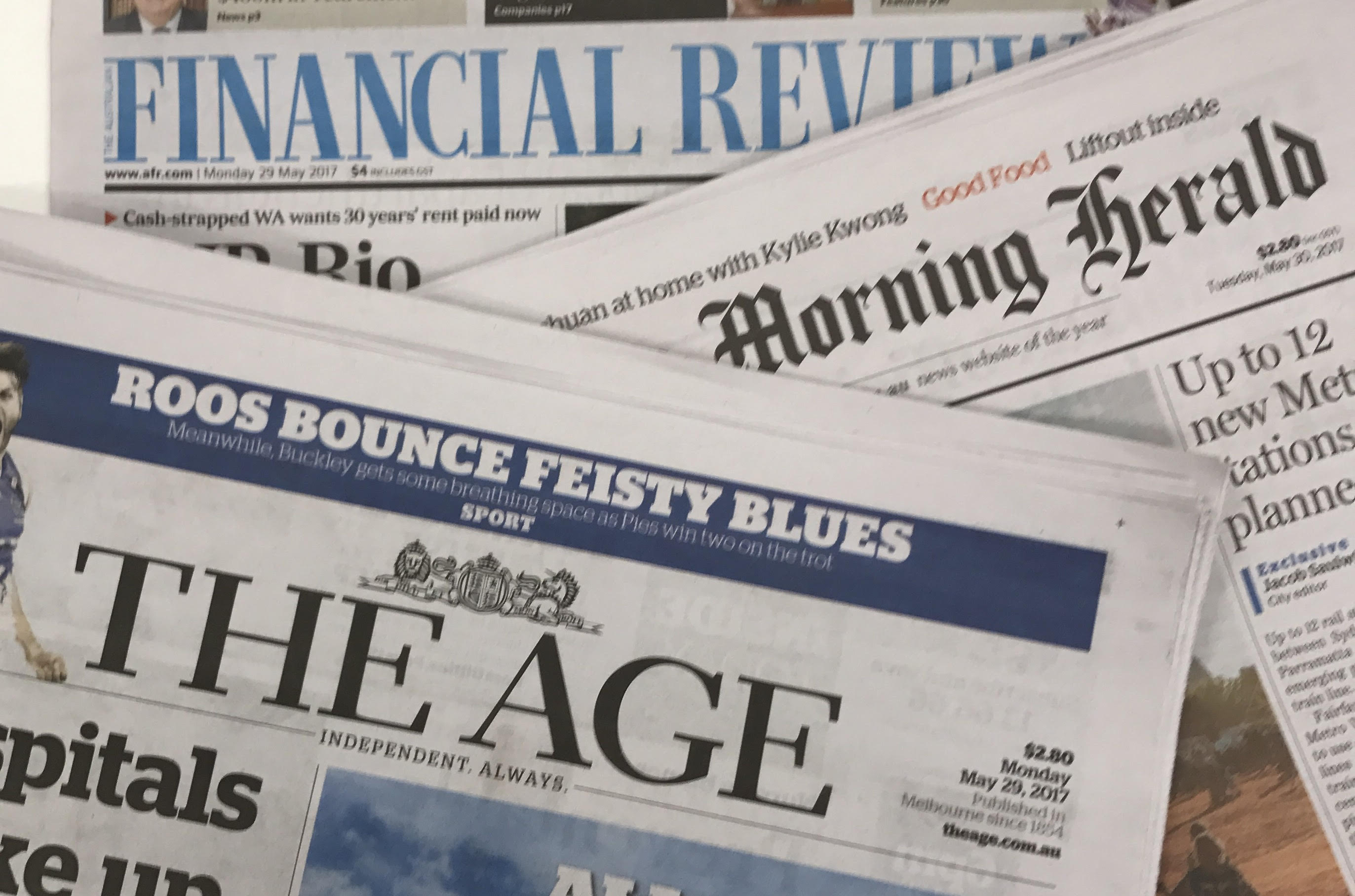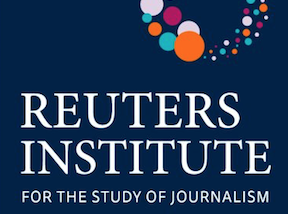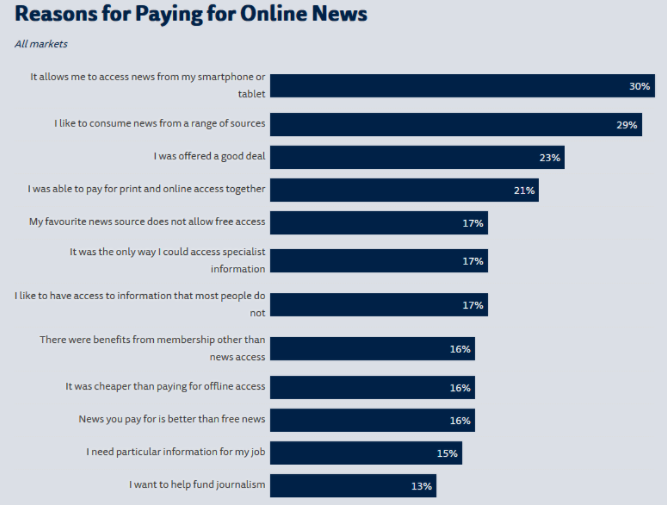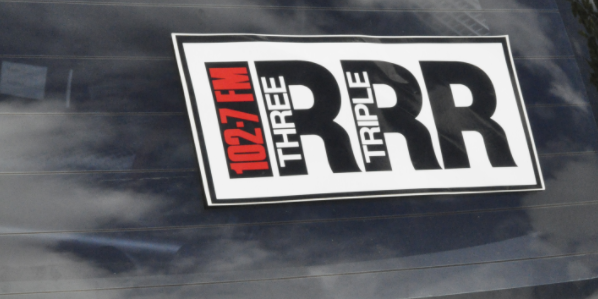Conspicuous consumption could save the news business
Advertisers are turning away in their droves, meaning the consumer is now the news industry’s last hope. Could the digital version of a radio car bumper sticker be exactly what the news industry needs to save itself from extinction?
It’s a dire time for the news industry. Readers are flooding to social media for content, advertisers are moving with them and costs are being cut at a brutal rate in a desperate bid to meet falling revenue.
It is increasingly clear that business models that depend on amassing large audiences in order to provide a forum for advertising will always struggle against the “niche of one” audience that social media platforms can provide for advertisers.
Instead, news media needs to draw revenue from consumers. It needs to find a way to persuade consumers to part with their cash in order to access content. As the Irish joke goes, if we are heading there we wouldn’t want to start from here.

Consumers, not advertisers, will be the news industry’s salvation
Two decades of free content has conditioned readers to believe they are entitled to access news without charge. Decent offerings from public broadcasters means there is always a solid alternative pipeline of free content. And social media platforms now own the relationship with many consumers, fostering a loyalty to itself as a conduit but creating a disloyalty to any single news outlet.
Amid these headwinds, news outlets are doing what they can to survive. Some are putting their hand out for external support, be it a benevolent owner who is willing to back a loss-making enterprise for the public good, or a government willing to offer tax breaks.
While there’s some scope for both, they may put at risk the independence that journalists rightly value. And even if those external supports are accessed, journalism still needs to find a way to draw more revenue from its consumers.
To succeed, news publishers will need to rethink the relationship they have with consumers.

A few weeks back, the Reuters Institute for the Study of Journalism released its Digital News Report, a survey on the state of the industry. One question in particular grabbed my attention.
The survey was keen to find out why people choose to subscribe to an online news service. Here’s what it found:

But it is the options the survey didn’t offer that may be a key to making news commercially viable again.
It didn’t ask people if they subscribe because of how an outlet makes them feel about themselves. Or because of how subscribing to an outlet will shape the way other people think of them.
We all know that a news outlet offers a world view through which it interprets events, and overwhelmingly its consumers share that world view. Few of us like having our world view challenged, although in my experience it is kind of fun.
But what if readers are not just choosing their news outlet because it reflects how they see the world, but because it reflects how they see themselves? In other words, people’s choice of news outlet is an extension of their personal identity, so that readers think of themselves as a “Daily Tele type” or a “Fin Review type” or a “Guardian type”.
Think of the way people buy other consumer goods, like cars. All perform the basic function of transport, and while there may be subtle performance differences between different models, many users have little awareness.
Instead, in large part a car choice is a manifestation of the buyer’s personal identity, whether you opt for a Mercedes to indicate a commitment to style, a Holden to indicate down-to-earth simplicity or a Volvo to indicate a commitment to family.
People are making consumption choices because of how it makes them feel about themselves and because of how other people perceive them. The consumption choice-as-personality signifier is a well-worn trope of popular psychology.
News outlets have enormous brand equity built up in their mastheads. Most of us develop an affection for a masthead that goes beyond an intellectual engagement to become an emotional attachment. Inevitably we also form judgements about other people based on where they get their news. Think of how you perceive someone when you find out they get their news from The Spectator compared to someone else who heads to Junkee.
But this is where we get the problem faced by the news industry. The consumption is not particularly conspicuous. The decision to subscribe or not subscribe to a particular news outlet is essentially a private matter between me and the publisher.
No one else will have the least clue where I get my news from, if anywhere at all. Which is great if I am concerned about privacy. But it is no good at all if I’m looking to consume conspicuously and signal to the world the kind of person I am.
Sure, I can choose to share individual items of content through social media platforms, but in those cases my social media followers are more likely to infer things about me from the substance of the content than its source.
So how about this. News outlets need to find a way to let subscribers show off their status as subscribers. There’s an analogue example of this on the streets of Melbourne right now. Spend an hour or two in Melbourne traffic and you’re bound to see a Triple R bumper sticker on a car, showing off the driver’s status as a subscriber to probably the best community radio station in the world.

The “I’ve got a Triple R bumper sticker” type
Why do people choose to put the sticker on the window? My hunch is that it is to signal to the world that this person is in touch with the indie culture celebrated by the station.
What does this look like in a digital era? Hard to know for sure, but perhaps the social media platforms that are so much of the problem for the news industry could be part of the solution.
What if there was a discrete space within a profile that allowed a user to list their outlets to which they are subscribed? News publishers might even be able to offer a tick of authenticity to prevent fraud. Or what if every time a person shared a piece of news content on social media the platform vouched for the sharer’s status as a subscriber?
A relatively simple step like this could turn a private act of consumption into a conspicuous one. It would also have the effect of outing non-payers as news freeloaders, creating a sense of shame around consuming without paying that is so far absent.
News outlets would also need to rethink the way they market their product to subscribers. Rather than luring people based on the functional qualities of the product (breaking news, quality writers, etc) they could lure them based on the ability to attach themselves to the personality of the masthead. In other words, this would allow publishers to unlock some of the brand equity.
Will it work? Maybe. Maybe not. But in an era where online cents are failing to replace lost print dollars, news outlets need to get smarter about how they attract revenue. Current strategies are not working, so perhaps it’s time to try something new.

Ari Sharp is a freelance writer with a decade of experience in news and PR in Australia.


People inside this news bubble are still missing the point, which isn’t just the elephant in the room, but the woolly mammoth in the room.
People of enough intelligence to want to subscribe to a newspaper online do NOT want to have someone watching over them as they read, profiling them by what they read, for how long and when – and on-selling it to undisclosed 3rd parties.
The subscription by credit-card only model is toxic, as it does not offer a cash or stored value card option, and therefore, privacy. That would provide the anonymity readers seek, and subscriptions will skyrocket. That in turn brings advertisers. It would also bring people into newsagencies to purchase a subscription card, the same way they do with Opal cards.
The blockheads in the decision-making process at News and Fairfax are incapable of seeing past their own lust for intrusive data collection, and as a result, they’re struggling. They’ll be circling the drain very soon unless they wake up.
Are you sure a Visa or Mastercard debit card wouldn’t work?
As to determining the proportion of society that is worried about having their every second of attention tracked, (to the extent that they will avoid that tracking), take the population of Australia and subtract the number of Facebook users. I think it’s about half (including lots of children and elderly).
“what if every time a person shared a piece of news content on social media the platform vouched for the sharer’s status as a subscriber”
That would work. Facebook’s proposed news paywall would only decrease the number of people seeing the ads on news sites’ pages. Only allowing people to follow *subscriber shared* social media links to news pages would be an interesting idea.